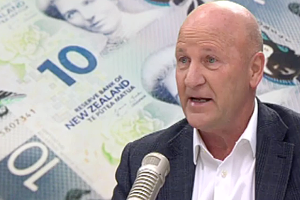Mortgages and cars – the two should not go together
Mortgage arrears were up slightly in May, with 22,000 home loans now past due - up 12% year-on-year and a return to 2019 pre-pandemic levels, the latest figures from credit bureau Centrix show.
Tuesday, July 2nd 2024, 12:22PM  2 Comments
2 Comments

New residential mortgage lending for the May quarter was 4.9% higher than the same period last year – but still 39% lower than the same time in 2021 during the property market boom.
It could be a signal the housing market is starting to warm up as average values decline, and buyers begin to take advantage of the conditions, Keith McLaughlin, Centrix managing director says.
However, Centrix data show almost half of the13,150 consumer accounts in financial hardship are mortgages (44%), alongside credit card debt (29%) and personal loan repayments (19%).
The highest rate of financial hardship is seen for those aged between 35 and 39 years old.
McLaughlin says consumers arrears are largely from telco and mortgage repayments as pressure from cost-of-living crisis endures.
“Despite falling in April, we’ve also seen auto arrears gradually increase over the last few years, another sign economic pressures are continuing to impact people’s larger, more substantial repayment obligations.
Don’t add to the mortgage
Consumers buying a car are being urged to shop around and rethink whether “putting it on the mortgage” is the best idea by the Financial Services Federation (FSF).
While vehicle loan arrears dropped to 5.5% in May, compared to 5.7% in the same month last year, the FSF says it is a timely reminder for potential vehicle buyers to stop and think before adding a big purchase onto a mortgage.
FSF executive director and former New Zealand Institute of Financial Advisers president Lyn McMorran says borrowers being encouraged to add a vehicle to a mortgage that still has 20 + years to run with fluctuating interest means they end up paying many times more in interest than they originally borrowed, making it more expensive than a shorter-term motor vehicle loan.
“It can also mean borrowing for longer than the useful life of the asset - in this instance a car – so if the car is replaced, say, within five years, they are still paying for an asset they don’t even own anymore for another 15 years.”
She says it is important to consider available options and whether a reputable motor vehicle finance provider who specialises in this area will mean a borrower is better off long-term.
“Anyone who is worried about their ability to pay a loan should contact their lender first. Lenders do not want their customers to suffer in silence, and the sooner they can help them work out a solution together, the better.”
Huge rise in company woes
On the business side, company defaults and liquidations rose in May with 233 companies placed in liquidation – the highest May figure recorded since 2014.
Year-on-year, all sectors have seen liquidations rise, with retail trade companies having the biggest increase annually followed by the property/rental and transportation sectors.
McLaughlin says while there has been an increase in liquidations across the country, there’s been a significant rise in the rate of South Island companies going into liquidation over the first quarter of 2024 when compared to the same period last year.
“Business credit defaults have also risen year-on-year, which further points to the overarching economic tension being experienced across the country as weaker consumer demand flows through to impacting businesses,” he says.
“There is plenty of uncertainty about the future, with many anticipating the challenging conditions to persist well into next year.”
For anyone who is feeling the pinch, it’s important to seek advice early to help get through without impacting their future financial wellbeing.
Consumer arrears
The number of consumers falling behind on payments increased by 16,000 in May, with arrears tracking 8.2% higher year-on-year.
Percentage wise, the number of consumers in arrears in May rose to 12.64% of the credit active population – up from 12.52% in the month prior – which translates to 474,000 people behind on payments, compared to 458,000 in April.
Of these, 173,000 consumers are 30+ days past due, and 114,000 are at 60+ days in arrears.
Encouragingly the number of people with non-performing loans (90+ days behind on their payments) has fallen to 90,000, unchanged year-on-year.
The number of consumers falling behind on payments increased by 16,000 in May, with arrears tracking 8.2% higher year-on-year.
Credit card spotlight
In New Zealand, there are 2,000,000 consumers holding an active personal credit card, with 115,000 new accounts opened in the last 12 months.
This was up 4,000 on the prior year, but lower than the 250,000 new accounts opened in 2019.
The average credit limit is $7,716 – up 4.1% (up over $300) since the beginning of 2020.
Additionally, the average age of a credit card user in New Zealand is 54.9 years old, up 3.5 years since the beginning of 2020.
| « Lending stock bounds ahead | Vincent Capital adds a South Island BDM » |
Special Offers
Comments from our readers
If you are going to seek finance for a new vehicle, it would be sensible to add it to your mortgage, but ensure the term is as short as possible, or keep the repayments at a level similar to the alternative car finance.
The interest rates will be lower, there are likely to be less (or even no) fees, and you have far more flexibility. For example, take the loan out over 10 years, but base the repayments over a shorter period (say 5 years). That saves you interest, and gives you the flexibility to reduce the repayments if you get into financial difficulty.
You could even go for a total refinance with another bank, and take the stupid cash incentives being offered, and further reduce your costs.
Sign In to add your comment
| Printable version | Email to a friend |



